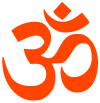Chakyar: Difference between revisions
>ChandlerMinh No edit summary |
Ajay Kumar (talk | contribs) (Updated the article) |
||
| Line 3: | Line 3: | ||
{{Hinduism small}} | {{Hinduism small}} | ||
'''Chakyar''' ({{lang-ml|ചാക്യാർ}}; {{IAST|Cākyār}}; {{IPA-ml|tɕäkjär}}; also spelled '''Cakyar, Chakkiar, Chakiar''', etc.) is an intermediate priestly [[caste]] coming under the [[Ambalavasi]] community of [[Hindu]]s in the [[Kerala]] state of [[India]]. The women in this caste are called ''Illotammas''. | '''Chakyar''' ({{lang-ml|ചാക്യാർ}}; {{IAST|Cākyār}}; {{IPA-ml|tɕäkjär}}; also spelled '''Cakyar, Chakkiar, Chakiar''', etc.) is an intermediate priestly [[caste]] coming under the [[Ambalavasi]] community of [[Hindu]]s in the [[Kerala]] state of [[India]]. The women in this [[Caste system in India|caste]] are called ''Illotammas''. | ||
[[File:Mani Madhava Chakyar.jpg|Mani Madhava Chakyar (1899 - 1990)- the doyen of Kutiyattam and ''Abhinaya'' (acting)|thumb|left]] | [[File:Mani Madhava Chakyar.jpg|Mani Madhava Chakyar (1899 - 1990)- the doyen of Kutiyattam and ''Abhinaya'' (acting)|thumb|left]] | ||
They occupy a position in the [[Hindu]] [[Temple]] in managing the affairs of the temple, though not the actual conduct of ceremonies. They are assigned with the holy temple ritualistic performance called [[Chakyar Koothu]] and [[Koodiyattam]], which is the only surviving ancient [[Sanskrit]] theatre in [[India]]. | They occupy a position in the [[Hindu]] [[Temple]] in managing the affairs of the temple, though not the actual conduct of ceremonies. They are assigned with the holy temple ritualistic performance called [[Chakyar Koothu]] and [[Koodiyattam]], which is the only surviving ancient [[Sanskrit]] theatre in [[India]]. | ||
Chakyar is the main actor who performs the ritualistic ''Koothus'' and ''Koodiyattams'' inside the temple or in ''[[Koothambalam]]s''. Their women, ''Illotammas'', are not allowed to participate in these. The women roles are done by ladies of [[Nambiar (Ambalavasi)|Nambiar]] community called ''Nangyarammas''. [[Nambiar (Ambalavasi)|Nambiar]] plays the holy drum ''[[Mizhavu]]''. | Chakyar is the main actor who performs the ritualistic [[Koothus and Koodiyattams|''Koothus'' and ''Koodiyattams'']] inside the temple or in ''[[Koothambalam]]s''. Their women, ''Illotammas'', are not allowed to participate in these. The women roles are done by ladies of [[Nambiar (Ambalavasi)|Nambiar]] community called ''Nangyarammas''. [[Nambiar (Ambalavasi)|Nambiar]] plays the holy drum ''[[Mizhavu]]''. | ||
There were 18 Chakyar families throughout Kerala, but now their number is small. '''''Mani''''' family is one of them. The greatest Koodiyattam and Chakyar koothu exponent, [[Natyashastra]] scholar and world-renowned [[Guru]], (late) ''Natyacharya Vidushakaratnam'' [[Padma Shri]] [[Mani Madhava Chakyar]] belonged to this family. | There were 18 Chakyar families throughout Kerala, but now their number is small. '''''Mani''''' family is one of them. The greatest Koodiyattam and Chakyar koothu exponent, [[Natyashastra]] scholar and world-renowned [[Guru]], (late) ''Natyacharya Vidushakaratnam'' [[Padma Shri]] [[Mani Madhava Chakyar]] belonged to this family. | ||
| Line 27: | Line 27: | ||
==External links== | ==External links== | ||
*{{cite journal|jstor=606843|title=Aj amila-Moksa-Prabandha of Narayana Bhatta|first=V. Venkatarāma Śarmā|last=Śāstrī|date=1 January 1926|journal=Bulletin of the School of Oriental Studies, University of London|volume=4|issue=2|pages=295–300}} | *{{cite journal|jstor=606843|title=Aj amila-Moksa-Prabandha of Narayana Bhatta|first=V. Venkatarāma Śarmā|last=Śāstrī|date=1 January 1926|journal=Bulletin of the School of Oriental Studies, University of London|volume=4|issue=2|pages=295–300|doi=10.1017/S0041977X00089217 }} | ||
*[http://www.ramanchakyar.com Shree Painkulam Raman Chakyar] | *[http://www.ramanchakyar.com Shree Painkulam Raman Chakyar] | ||
| Line 36: | Line 36: | ||
[[Category:Malayali people]] | [[Category:Malayali people]] | ||
[[Category:Social groups of Kerala]] | [[Category:Social groups of Kerala]] | ||
[[Category:Hindu communities]] | |||
Latest revision as of 20:05, 23 July 2023
| Part of a series on |
| Hinduism |
|---|
 |
Chakyar (Malayalam: ചാക്യാർ; Cākyār; Malayalam pronunciation: [tɕäkjär]; also spelled Cakyar, Chakkiar, Chakiar, etc.) is an intermediate priestly caste coming under the Ambalavasi community of Hindus in the Kerala state of India. The women in this caste are called Illotammas.
They occupy a position in the Hindu Temple in managing the affairs of the temple, though not the actual conduct of ceremonies. They are assigned with the holy temple ritualistic performance called Chakyar Koothu and Koodiyattam, which is the only surviving ancient Sanskrit theatre in India.
Chakyar is the main actor who performs the ritualistic Koothus and Koodiyattams inside the temple or in Koothambalams. Their women, Illotammas, are not allowed to participate in these. The women roles are done by ladies of Nambiar community called Nangyarammas. Nambiar plays the holy drum Mizhavu.
There were 18 Chakyar families throughout Kerala, but now their number is small. Mani family is one of them. The greatest Koodiyattam and Chakyar koothu exponent, Natyashastra scholar and world-renowned Guru, (late) Natyacharya Vidushakaratnam Padma Shri Mani Madhava Chakyar belonged to this family.
Chakyars preferred to associate themselves more with the Ambalavasis than what they considered the unequal status amongst the Namboothris.[citation needed]
See also[edit]
- Ammannur Madhava Chakyar
- Ammannur Rajaneesh Chakyar
- Mani Damodara Chakyar
- Mani Madhava Chakyar
- Painkulam Raman Chakyar
- List of Ambalavasis
References[edit]
- Natyakalpadrumam, by Guru Mani Madhava Chakyar,1975.
External links[edit]
- Śāstrī, V. Venkatarāma Śarmā (1 January 1926). "Aj amila-Moksa-Prabandha of Narayana Bhatta". Bulletin of the School of Oriental Studies, University of London. 4 (2): 295–300. doi:10.1017/S0041977X00089217. JSTOR 606843.
- Shree Painkulam Raman Chakyar
